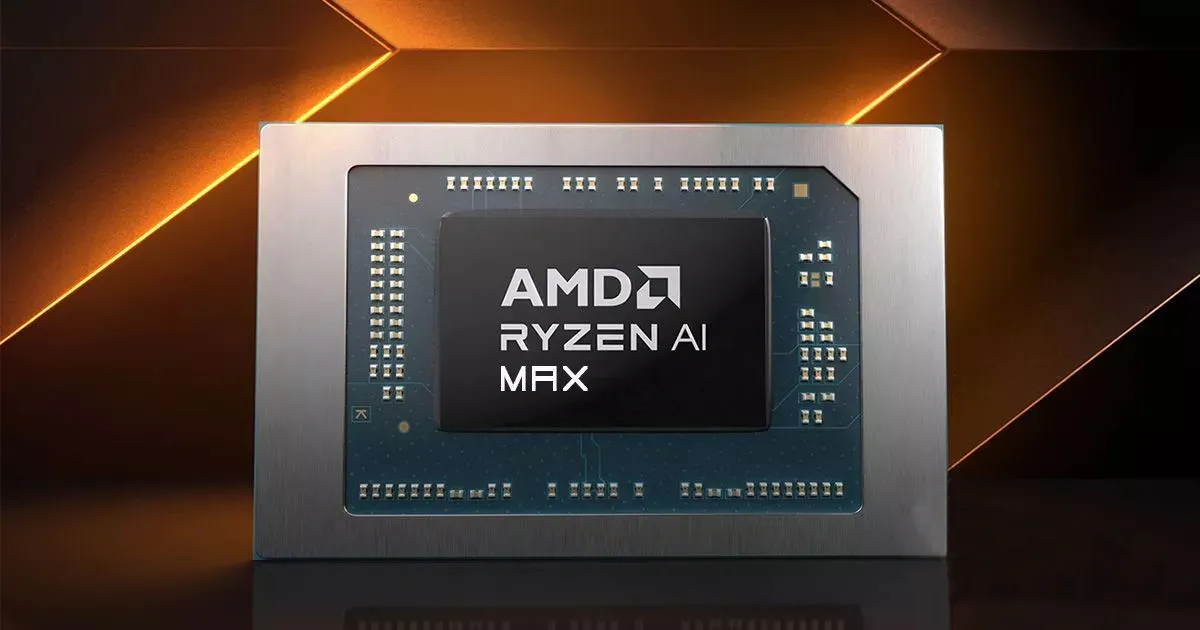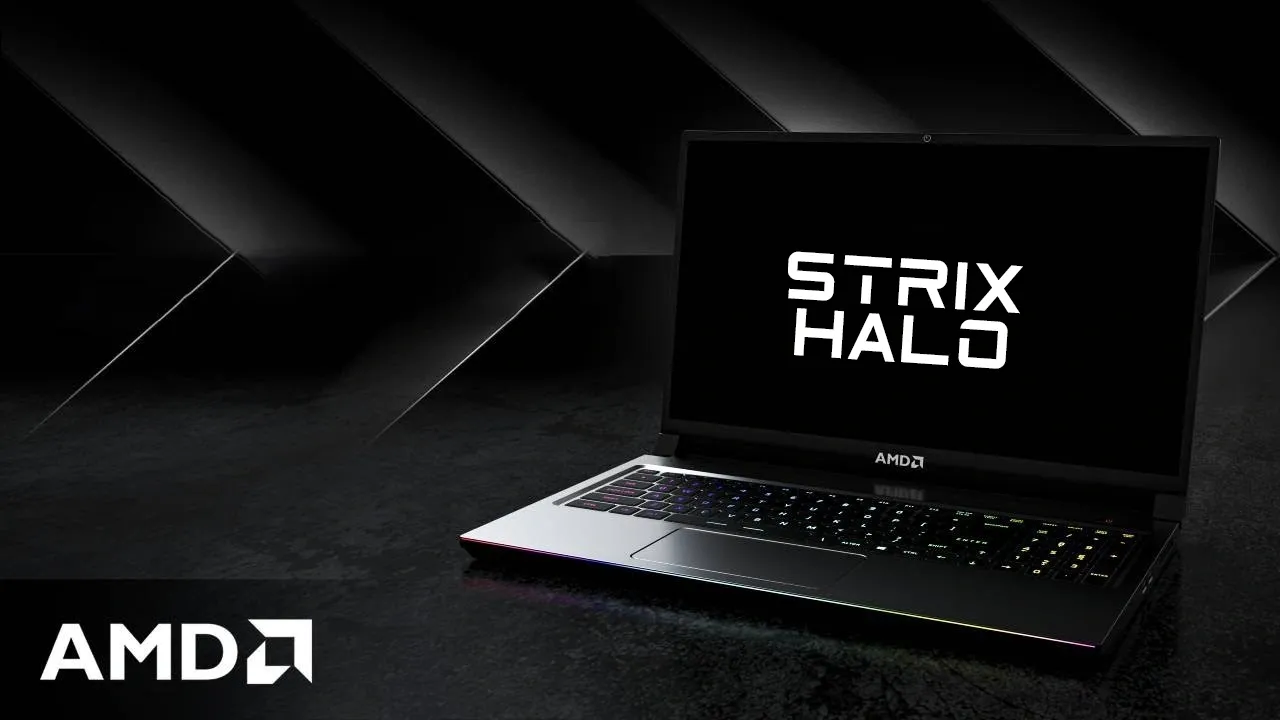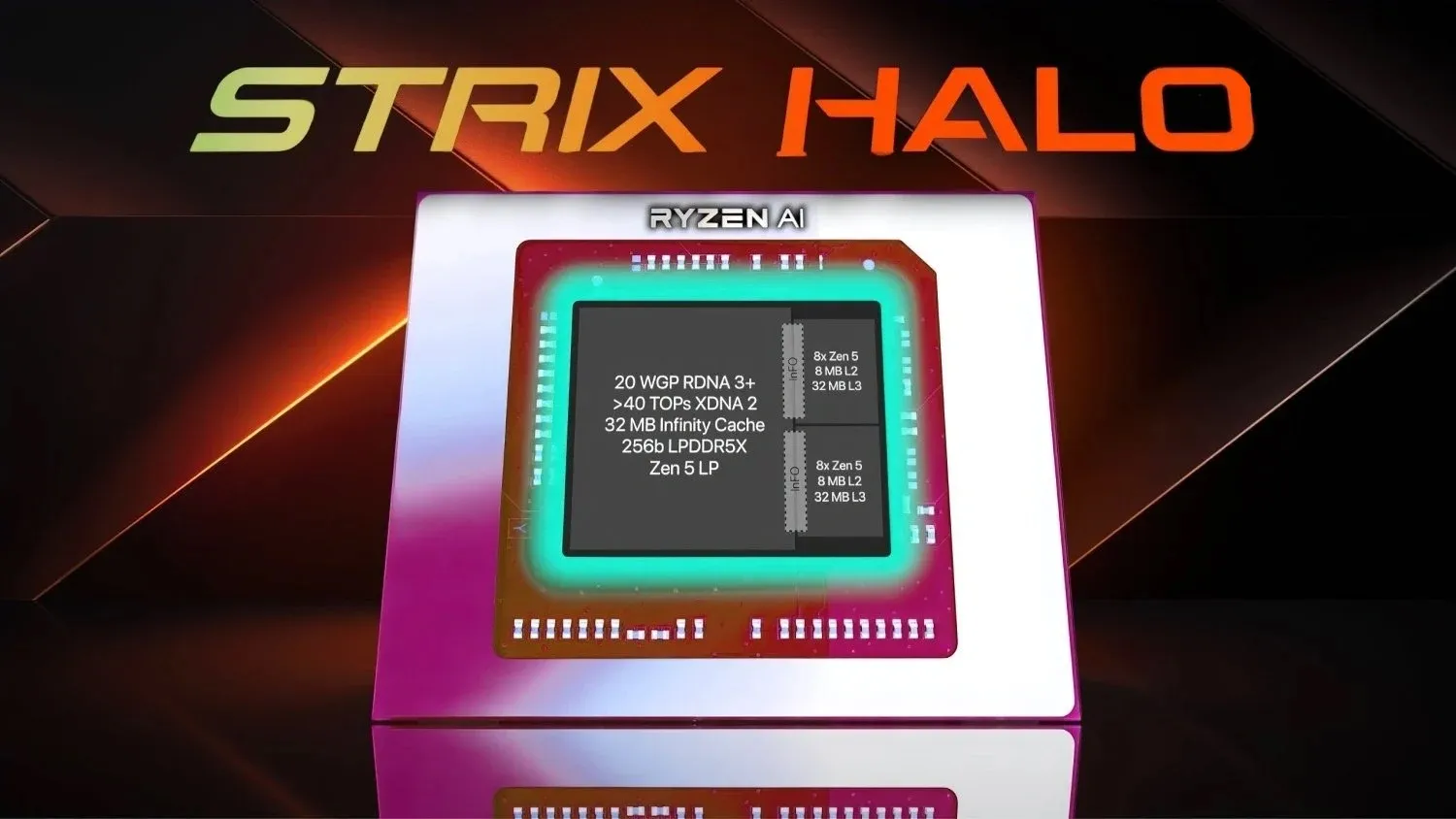With CES 2025 just around the corner, exciting developments in AMD’s Strix Halo series are beginning to take shape.
The Ryzen AI MAX+ Pro 395 is gaining attention, showcasing a combination of impressive specifications and promising performance potential, all aimed at positioning AMD's latest APU as a formidable player in the high-performance workstation and laptop markets.

Although the initial benchmark results are still evolving, the specifications themselves hint at the power and innovation behind this flagship APU.
Key Specifications of the Ryzen AI MAX+ Pro 395
The Ryzen AI MAX+ Pro 395 is poised to be AMD's premier offering for next-generation workstations and laptops. Here’s a breakdown of its main features:
CPU and RAM Configuration:
-
16 CPU cores based on AMD's cutting-edge Zen 5 microarchitecture.
-
32 threads, offering robust multi-threaded performance.
-
64GB of RAM, with the potential to scale up to 128GB, making it suitable for demanding workloads.
Graphics and Compute Units:
-
A formidable 40 Compute Units (CUs) for its integrated Radeon RX 8600S iGPU, aimed at delivering powerful graphics performance.
-
The graphics are expected to perform on par with an Nvidia RTX 2060, with room for improvement as further optimizations are made.
Clock Speeds and Cache:
-
Maximum clock speeds of 4.4 GHz, which will likely see increases over time as optimizations are implemented.
-
A dual-CCD design, offering a total of 64MB of L3 cache and 16MB of L2 cache, ensuring efficient performance across a wide range of tasks.
Strix Halo and Its Competitive Position

The Ryzen AI MAX+ Pro 395, or simply Ryzen AI 395, is part of AMD’s ambitious Strix Halo lineup of APUs, designed to compete in the high-performance segment of the market. Here’s what you need to know about its competitive standing:
Target Market:
-
The Strix Halo APUs are tailored for workstations and high-end laptops, where powerful computing performance is a necessity.
-
AMD is positioning the Strix Halo series against Apple’s M-series chips and Nvidia’s dedicated GPUs in the laptop segment.
Graphics Architecture:
-
Strix Halo will feature AMD’s Radeon 8000S series of iGPUs, specifically the Radeon 8060S and 8050S, which are based on RDNA 3.5 architecture.
-
The iGPU is likely housed within a large System-on-Chip (SoC) die, with upwards of 32MB of MALL (Memory Access Latency) or Infinity Cache, which helps reduce memory bottlenecks.
It’s expected that the 40 CU configuration will provide around 25% more power than the RX 7600, offering substantial graphical performance improvements over previous models.
Although the initial benchmarks do not blow the competition out of the water, there are still several reasons to be excited:
Graphics Performance:
-
The Vulkan benchmark results are currently on par with an Nvidia RTX 2060, indicating strong but not yet groundbreaking graphical performance.
-
This is expected to improve as the silicon is further refined and optimized.
Processing Power:
- With 16 cores and 32 threads, the Ryzen AI 395 is set to deliver robust performance across multiple applications, including demanding workloads like AI, 3D rendering, and scientific computing.
Real-World Expectations:
-
While not likely to rival high-end GPUs like the RTX 4090, the Strix Halo could provide fierce competition for mid-range options, such as the RTX 4070 laptop GPU.
-
The APU is expected to deliver strong all-around performance, especially in portable, compact systems.
Pricing and Availability
As with all high-performance hardware, pricing remains a key consideration:
Availability:
The Ryzen AI 300 family, including the Strix Halo series, will have limited availability at launch, particularly in the higher-end configurations.
Cost Implications:
-
The cost of the Strix Halo APUs will likely be on the higher end, given their premium performance and the innovative technology used in their design.
-
However, AMD’s competitive pricing strategy may offer a compelling value proposition compared to other high-end chips on the market.
What to Expect at CES 2025
The official unveiling of AMD’s Strix Halo lineup is expected to take place at CES 2025, where the company will likely showcase not only the Ryzen AI MAX+ Pro 395 but also the Kracken Point family of processors and the new Radeon RX 8000 series of GPUs.
AMD’s presence at CES promises to set the stage for the future of high-performance computing in both workstations and laptops.
As the world waits for the official launch, the Strix Halo APUs, with their blend of CPU power and integrated graphics capabilities, stand poised to reshape the landscape of portable computing.







